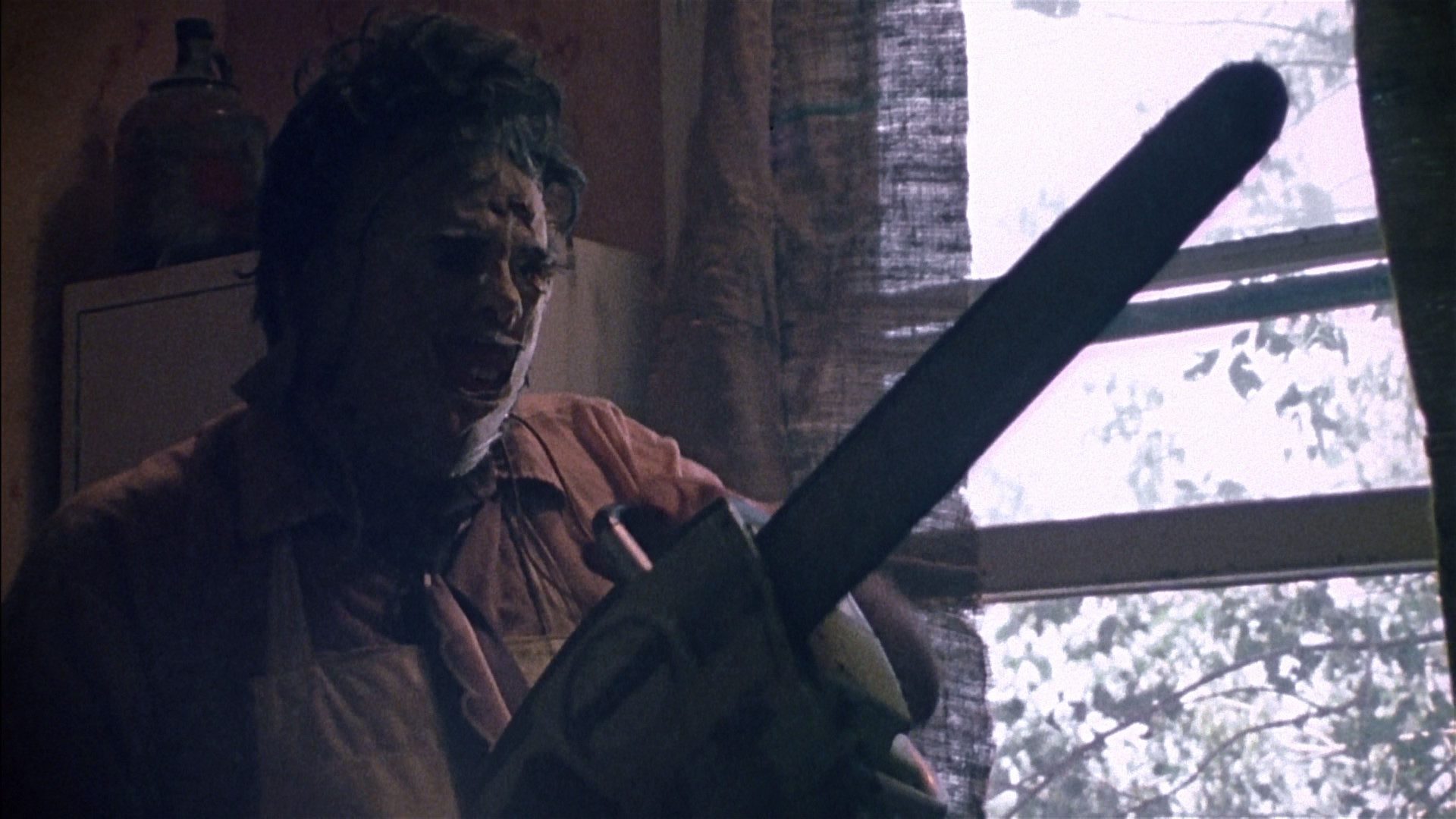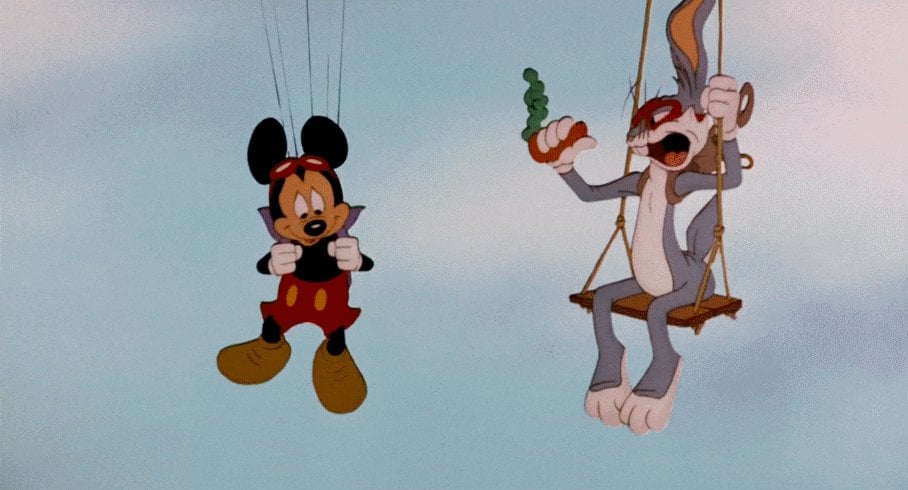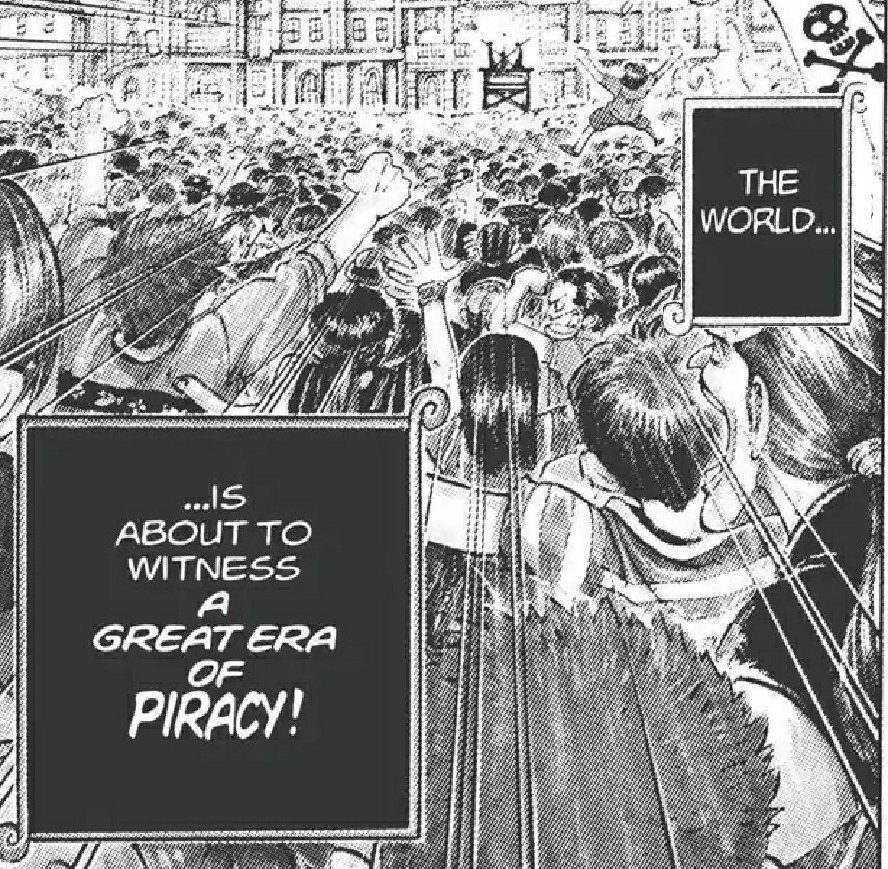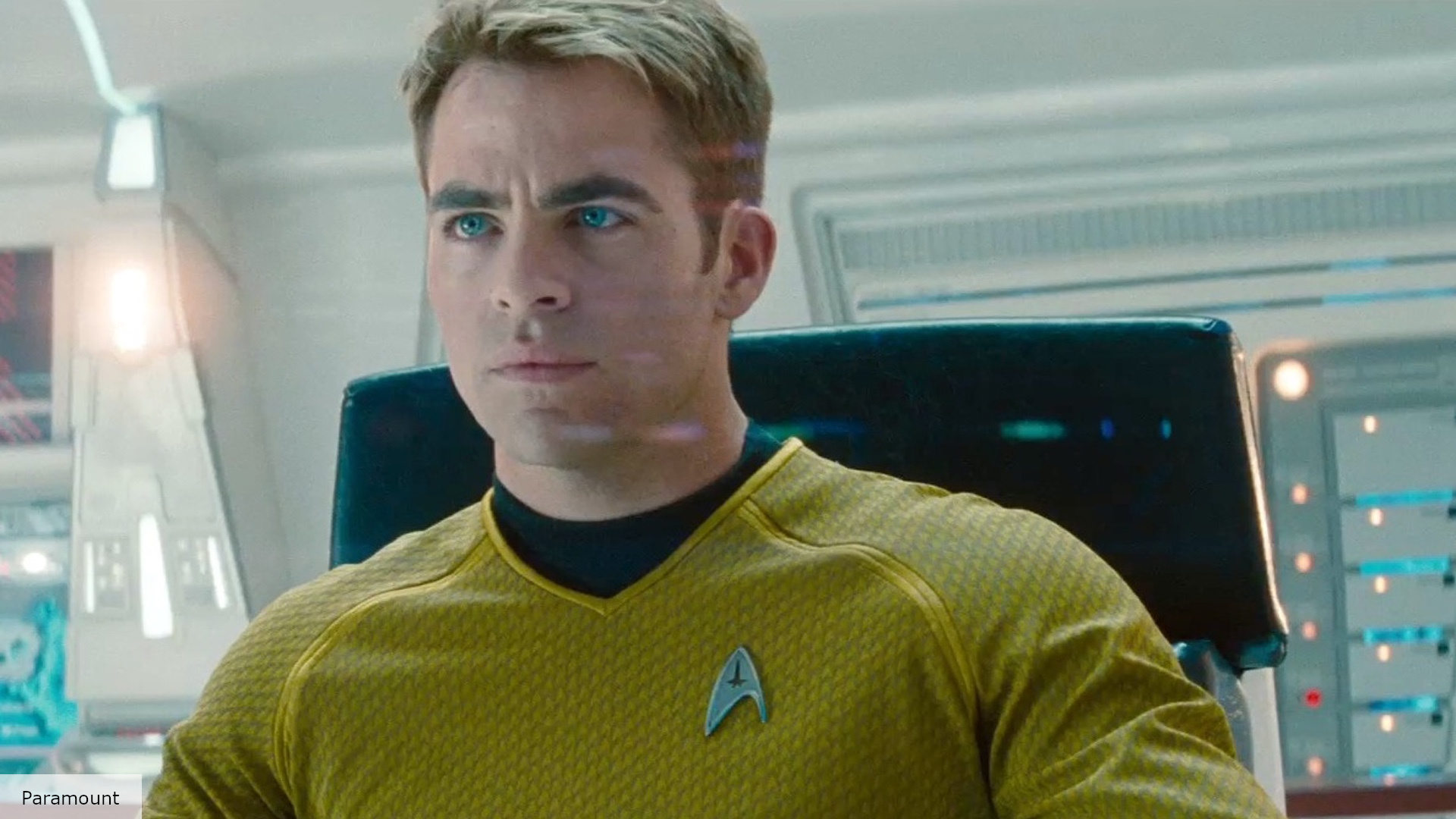“You can make them stop!”
Patton Oswalt has a bit where he explains that the greatest movie title of all time is The Texas Chainsaw Massacre. He’s not wrong. Like the film itself, the title slowly escalates in intensity with each word, each syllable: there’s that sinister, slashing X in “Texas,” the horrific implications of “Chainsaw,” and the blunt reality of “Massacre.” The Texas Chainsaw Massacre is the rare film that lives up to the shocking brutality implied by the title. 43 years after its initial release, it has lost none of its potency, none of its power to shock and sicken. This is as close to a perfect horror film as you are likely to see in your life.
The film begins with an opening text crawl and accompanying voiceover (supplied by John Larroquette) that lays bare the stakes at play, and establishes the film as a true story (it’s not, but it was inspired by Wisconsin serial killer Ed Gein). Released in 1974, the film takes place in 1973, lending it an air of plausible immediacy. Director Tobe Hooper switches from the plainspoken realism of Larroquette’s narration to atmospheric shots of carnage and decay. We see an unearthed body, desecrated, wired to a tomb. The message is clear: we are in horror country.
If anything in this essay sounds hyperbolic, it will undoubtedly be this next statement: The Texas Chainsaw Massacre plays like a horror film written by Cormac McCarthy. In Hooper’s film, as in McCarthy’s prose, America is far more vast and ancient than we will ever comprehend. It hides random, chaotic violence, which most of the time doesn’t even try to mask itself in the veneer of humanity. Like in great McCarthy works like Outer Dark or The Orchard Keeper, one event in Chainsaw leads inexorably to the next, regardless of how seemingly arbitrary it seems.
A quintet of young men and women – Sally, Kirk, Pam, Jerry, and Sally’s wheelchair-bound brother Franklin (whom the opening text dismissively refers to as an “invalid”) – are making a road trip, bound for who knows where. They stop to see the grave of Sally and Franklin’s grandfather, and to make sure that it is not one that has been desecrated. In these opening sequences, Hooper makes one of his most quietly subversive choices: these kids are actually kind of likable. They run the gamut from neutral to interesting, which flies in the face of conventional genre wisdom, which mandates that you take one sympathetic character, surround them with horrible cartoons, and allow your audience the sick satisfaction of watching these terrible kids get butchered.
Hooper isn’t interested in that. He takes his time with a lot of Chainsaw‘s more unsettling sequences, and they become even more effective because of it. Take the interlude with the drifter, who the group picks up hitchhiking near a slaughterhouse. The man is manic, overly, insistently friendly, with a huge birthmark across his face. He used to work at the slaughterhouse, and shares pictures with the group of cows he had butchered. He takes Franklin’s knife and cuts himself across the palm. He takes Franklin’s picture then demands money for it. When the group won’t pay, he takes the picture and lights it on fire.
The film downshifts after that, long enough for the group to arrive at Sally and Franklin’s old house. It’s abandoned and decrepit, with crude bone sculptures hanging from the lintels. Here the horror begins, and it never ends. It’s quite frankly remarkable how well-paced The Texas Chainsaw Massacre is; this is one of those films that might have you watching through your hands for 83 minutes.
Before long, Kirk and Pam have found a house in the middle of a field. Here Leatherface makes his debut, leaping into frame and whacking Kirk on the head with a sledge. Kirk’s death isn’t pretty – he drops to the floor, seizing, and Leatherface has to hit him a few more times. It’s ugly, and upsetting. Hooper denies us the relative release of an explosion of gore. Pam doesn’t fare much better. Dragged kicking and screaming – god, the screaming – into the house, Leatherface deposits her easily onto a meathook. Later she’ll be found in a freezer.
The Texas Chainsaw Massacre is a surprisingly bloodless movie – Hooper was aiming for a PG rating but got an X because of the film’s sheer horror – which makes it hew closer to actual art. This might be a cult favorite, but it’s not a B movie. The film looks gorgeous (a recent 4K restoration does wonders) and Hooper’s choice to eschew an orchestral score in favor of only diegetic sounds adds queasy verisimilitude.
The most striking example of this approach is in the sound of the titular weapon. Chainsaws are loud, unwieldy, used only for tearing things apart. It’s a terrifying weapon, and Hooper makes it louder than anything else (when Leatherface is chasing Sally through the woods, you can see actress Marilyn Burns cover her ears; I like to think that this was involuntary). Sally’s escape, and recapture, plays like Grand Guignol. She flees the house, takes refuge at a barbecue restaurant, is bound and gagged by its owner, returned to the house, escapes again, seeks help from a truck driver, and ends up in the bed of a pickup truck. It’s breathless, but more than that, it’s relentless. A modern filmmaker would elongate it to the second half of the film; Hooper does it in thirty minutes. The imagery he utilizes here is at times horrific, at times squirm-inducing, such as when Sally’s finger is cut, then put in the mouth of an old man so he can suck her blood.
The best horror films feel like once-in-a-generation endeavors. They should leave you shaken, adrenalized, and thrilled, almost giddy, at the audacity of the filmmakers. Very few horror films in my life have shaken me as profoundly as did The Texas Chainsaw Massacre. In its fearless plunge into the dark pit at the soul of America, in its violence, which is both graphic and suggestive, in the expediency and efficiency of the storytelling, it induces in one a feeling of awe. You sit up straighter, shake yourself off, and think: I can’t believe they made that. This is one of the greats.
10/1: Dawn of the Dead
10/2: Drag Me to Hell
10/3: Pet Sematary
10/4: The Descent
10/5: Repo! The Genetic Opera
10/6: Desierto
10/7: The Blair Witch Project
10/8: Blair Witch
10/9: The Texas Chainsaw Massacre
10/10: A Nightmare on Elm Street (2010)
10/11: Prince of Darkness
10/12: 30 Days of Night
10/13: Friday the 13th (2009)
10/14: Slither
10/15: Tremors
10/16: Pandorum
10/17: It Follows
10/18: A Girl Walks Home Alone at Night
10/19: Poltergeist
10/20: Paranormal Activity
10/21: Creepshow
10/22: VHS
10/23: Nosferatu the Vampyre
10/24: An American Werewolf in London
10/25: The Witch
10/26: The Rocky Horror Picture Show
10/27: Cronos
10/28: The Hills Have Eyes
10/29: The Hills Have Eyes (2006)
10/30: Tucker and Dale vs. Evil
10/31: Halloween (2007)






